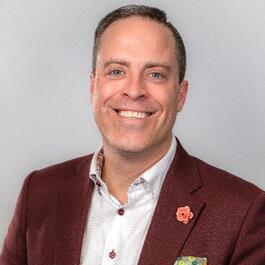
Jamie Shanks | Specific Account-Based Sales Development Best Practices For The Modern, Social Sellers
From account selection to sales plays, Jamie Shanks helps sales professionals understand and adopt best practices for the modern, social sellers. Jamie is the CEO of Sales For Life, which is the de-facto standard in modernizing account-based sales motion. The company specializes in social or digital selling. It evaluates how you sell today and infuses modern digital sales activities into your process. Account-based selling Account-based selling refers to focusing on a set number of accounts, whether it’s organized by territory or strategic value. Instead of relying on inbound leads or channel leads, you must go outbound. Jamie named his book Spear Selling based on a sales analogy of fishing: inbound efforts are a little like fishing with a net because you can’t choose the fish that land in your net. When you fish with a spear, you swim in the deep water and choose the whales you’re going to hunt. Typically, companies focus on account-based motion because they need to increase their average annual contract value (ACV) or lifetime value (LTV). Adopting an account-based approach Companies often get the very first step wrong, which is account selection. Many companies use what Jamie calls wallet-share based thinking. When he was working with a company in the health and wellness space, an account exec pointed to Peloton as a company he was focused on connecting with. When questioned, the AE mentioned that one of the company leaders was a bike enthusiast who thought it might be a good fit. The truth is that the health company has no more strategic connection to Peloton than its competitors do. In fact, if they went through the data of relationships, they might discover that the competitors have greater social proximity to the account. That means you may devote 8 months trying to win this account to find that there’s a hurdle you didn’t account for. Getting the account selection process right is half the equation. Companies that ask their sales professionals to build a list of accounts will likely find that they stack ranked companies based on revenue, number of employees, and market share potential. They didn’t think about the fact that people buy from people and relationships matter. Sales is a game of relationships. If you could reverse-engineer your existing advocates and customers and identify which accounts have the highest social proximity, you’ll have an advantage that your competitors can’t take from you. Account-based models A centralized model looks at the equation and asks how certain sales resources like inside sales, BDRs, SDRs, and LDRs can mine the total addressable market. It maps green-flag accounts based on relationships, opportunities, and strengths. They could be referrals, partners to your existing customers, or others you’re connected to. Red-flag accounts are those where your competitors have relationships, strengths, and opportunities. The decentralized model seeks to identify those accounts that a company already has connections to. The idea is that the company can activate those accounts faster than the competitors can. Companies might go with the centralized model because it uses the $20-an-hour inside sellers to do the work instead of the more-expensive AEs. They might choose the decentralized model because they want everyone in the field to be able to unearth the total addressable market of their area. Each person is the CEO of his own territory. Account selection is a skill that everyone needs to master. Modern digital sellers The modern digital seller selects accounts based on...
From "The Sales Evangelist"




Comments
Add comment Feedback